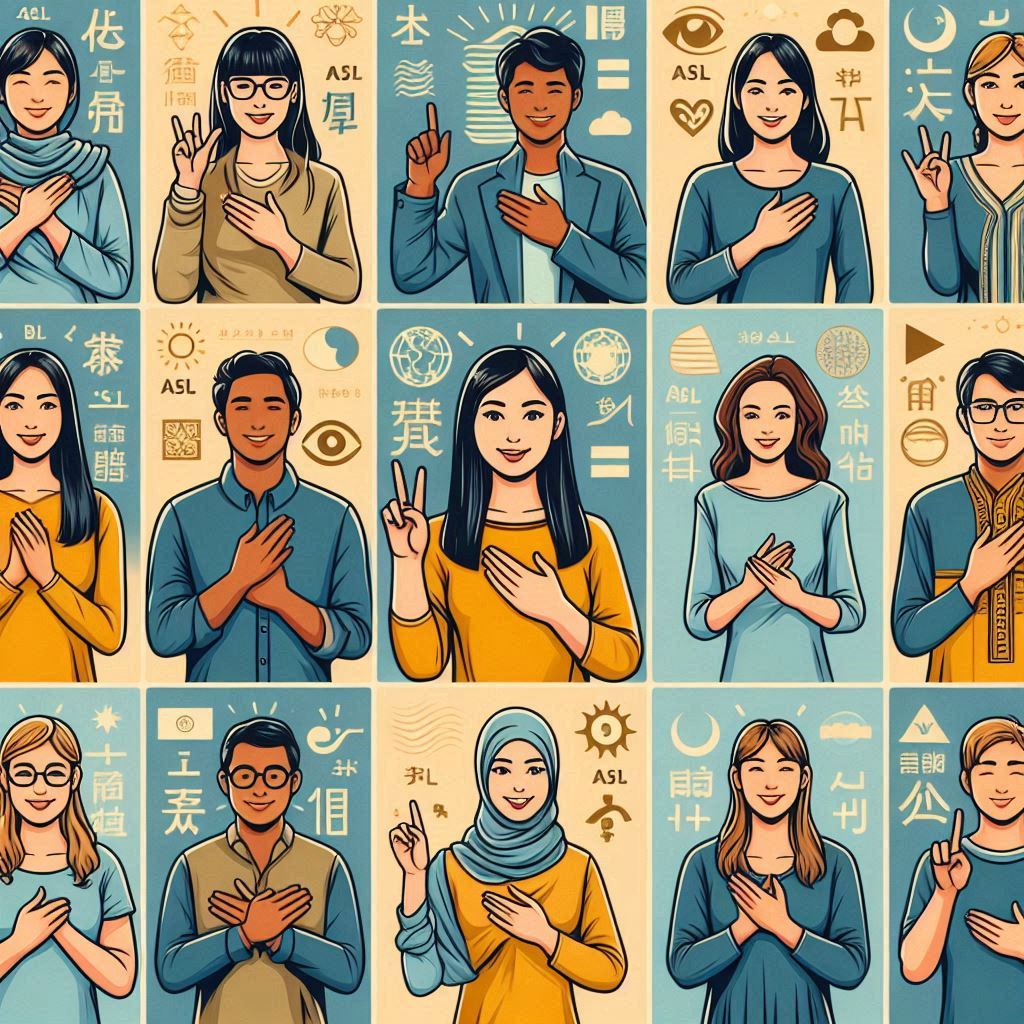
Exploring Sign Language Variations Around the World
- Posted by Cicada Sign
- Categories Blog
- Date September 12, 2024
- Comments 0 comment
Sign language is not universal. Much like spoken languages, sign languages vary across regions, countries, and even within different communities. Each sign language has developed unique linguistic structures, expressions, and cultural influences. While American Sign Language (ASL) may be the most widely recognized due to media exposure, it’s just one of many rich and vibrant sign languages practiced across the globe.
In this blog, we’ll take a journey to explore some of the most commonly used sign languages worldwide, their unique features, and how they reflect the diversity of the Deaf communities that use them. From Arabic Sign Language to British Sign Language, let’s delve into the beauty and complexity of global sign languages.
American Sign Language (ASL)
One of the most prominent sign languages, ASL is used primarily in the United States and parts of Canada. ASL is its own complete language with distinct grammar and syntax, separate from English. It has its own cultural significance and deep ties to the Deaf community.
Unique Feature: ASL relies heavily on facial expressions and non-manual signals, such as eyebrow movements and mouth morphemes, which can change the meaning of signs.
British Sign Language (BSL)
In the United Kingdom, British Sign Language (BSL) is the primary sign language. Interestingly, BSL is very different from ASL, despite both languages developing in English-speaking countries. For example, the two-hand alphabet in BSL contrasts with the one-handed alphabet in ASL.
Unique Feature: BSL incorporates a two-handed manual alphabet, making it distinctive from the one-handed alphabet used in ASL and other sign languages.
Arabic Sign Language (ArSL)
Arabic Sign Language (ArSL) is a collective term that refers to several sign languages used across the Arab world. While there is no single standardized version of ArSL, each country has developed its own system based on regional dialects and cultural practices.
Unique Feature: The influence of Islamic culture is often visible in ArSL. For example, signs for religious practices, like prayer, reflect Islamic traditions, highlighting the interplay between culture and language.
Japanese Sign Language (JSL)
Japanese Sign Language (JSL), or Nihon Shuwa, is the official sign language used in Japan. JSL is unique because it incorporates not only hand movements but also the mouthing of Japanese words and syllabary (Hiragana and Katakana).
Unique Feature: JSL users often mouth Japanese words while signing, and the language incorporates written Japanese elements, providing an additional layer of communication for those familiar with the spoken language.
French Sign Language (LSF)
French Sign Language (LSF) has had a profound influence on the development of other sign languages, including ASL. France was one of the first countries to formally educate Deaf individuals using sign language, and LSF is still widely used today.
Unique Feature: LSF, like many other European sign languages, has its roots in the Deaf schools of Paris, which have helped develop a rich, distinct grammar and cultural significance over centuries.
Brazilian Sign Language (LIBRAS)
LIBRAS is the official sign language of Brazil, recognized by the Brazilian government. LIBRAS is distinct but also has some historical connections to both French Sign Language and Portuguese Sign Language, given Brazil’s history as a Portuguese colony.
Unique Feature: LIBRAS includes many signs that reflect Brazilian culture, making it not just a language but a reflection of the country’s societal values and traditions.
The Importance of Cultural Context
Sign languages aren’t just a collection of hand gestures and movements. They are living languages shaped by the people and cultures that use them. The variations in sign languages reflect the diversity of human expression, each one offering a window into the culture and values of its speakers. For instance, in some sign languages, signs for family members or professions are gendered, reflecting traditional societal roles.
Furthermore, sign languages evolve over time, just like spoken languages. New signs emerge as societies advance and adapt to changing cultural norms. Thus, learning about different sign languages is also about understanding the cultures they represent.
Cicada Sign’s Commitment to Diversity in Sign Languages
At Cicada Sign, we recognize the vast diversity of sign languages and the communities that use them. Our mission is to make education accessible to all Deaf individuals, no matter where they are in the world. That’s why we’re committed to developing courses in multiple sign languages, allowing our learners to access education in their preferred language.
By embracing the richness of global sign languages, we not only support linguistic diversity but also contribute to the preservation of Deaf culture around the world. Cicada Sign is proud to provide tools and resources to support the learning of sign languages, whether it be for beginners or advanced users.
As we celebrate the beauty and diversity of global sign languages, let’s also recognize the importance of fostering inclusivity and preserving Deaf culture. Sign languages, in all their variations, are an essential part of human communication and expression. By understanding their nuances, we can better appreciate the unique contributions of Deaf communities worldwide.





